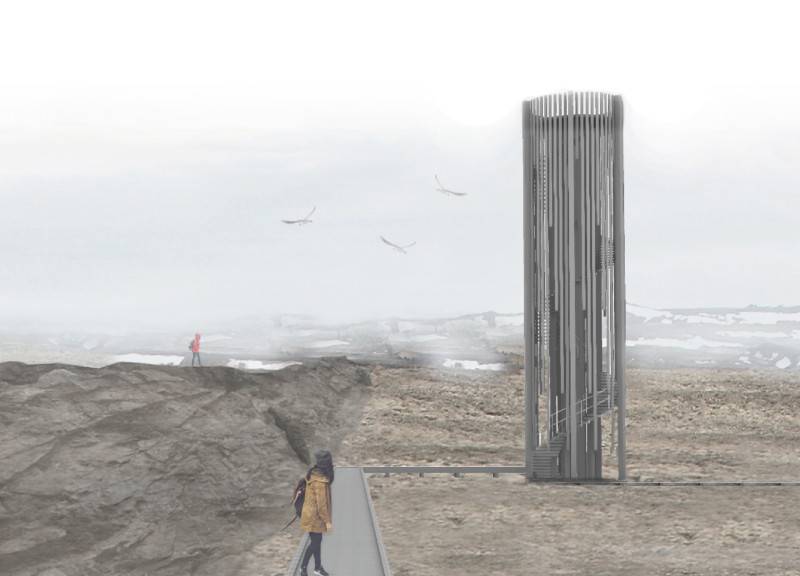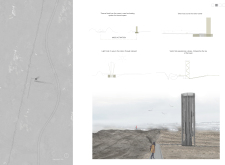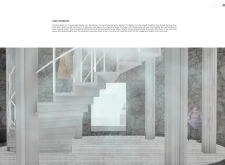5 key facts about this project
The primary function of the project is to provide amenities for tourists exploring the unique landscape of the area, while simultaneously acting as an educational platform focusing on the region's geological heritage. The design includes essential spaces such as an exhibition area, a café, and observation points that enhance the visitor experience.
The visitor center’s layout supports a natural flow of movement, guiding visitors from the parking area through a pathway leading to the main entrance. Key components of the design include a prominent observation tower that offers panoramic views of the surrounding landscape, a spiral staircase that connects different levels, and large windows that maximize natural light. The materials selected for the project—volcanic rock, ferronconcrete, larch wood, extruded polystyrene, and shotcrete—are prominent throughout the structure, reinforcing its connection to the site.
One distinguishing aspect of the Rising Hollow project is its response to the local climate and geological conditions. The design capitalizes on geothermal energy for heating, ensuring a reduced environmental footprint. Additionally, the use of volcanic rock aligns the structure visually and contextually with its setting, serving both aesthetic and functional purposes. The integration of exterior and interior spaces allows for various perspectives of the landscape, while the exploration of textures through material choice adds to the architectural narrative.
The incorporation of energy-efficient geothermal systems and local materials not only reduces operating costs but also promotes environmental stewardship. The organization of the visitor routes, alongside distinct zones for learning and observation, enhances the interaction between visitors and the natural features of the site.
For further insight into the Rising Hollow project, including architectural plans, architectural sections, and architectural designs, readers are encouraged to explore the detailed project presentation that elaborates on the innovative architectural ideas that define this unique intervention in Iceland's landscape.


























